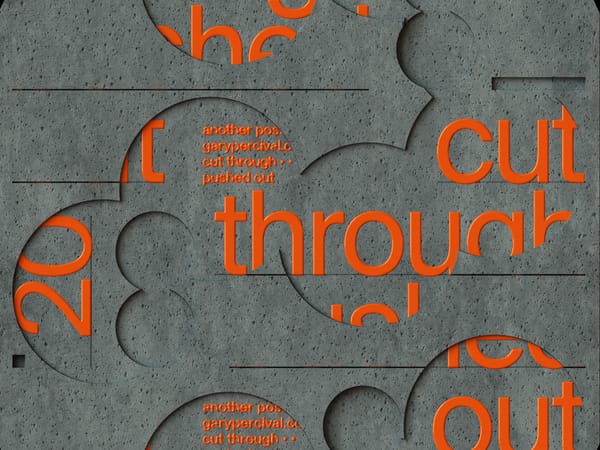Mastering the Art of Response: How to Turn Obstacles into Opportunities
Have you ever noticed how some people seem to have a knack for overcoming obstacles and achieving their goals, while others struggle to get ahead?

Have you ever noticed how some people seem to have a knack for overcoming obstacles and achieving their goals, while others struggle to get ahead?
It's not just luck or talent that sets these individuals apart; it's their ability to respond effectively to challenges. In this blog post, we'll explore the power of response and how it can make the difference between being victorious or defeated in life. From adopting a growth mindset to using specific strategies for effective response, we'll examine the key factors that contribute to success in the face of adversity.
So whether you're facing a major setback or simply looking to achieve your goals, read on to discover how the power of response can help you overcome any challenge.
The Power of Positive Response
Why a Positive Response is Critical for Success
Have you ever faced a challenging situation and felt like everything was going against you?
We've all been there. But have you noticed that some people seem to bounce back from setbacks with ease, while others get stuck in a negative spiral? The difference between these two groups often boils down to a single factor: the effectiveness of a positive response.
A positive response is not just about putting on a happy face or pretending that everything is okay when it's not. It's about recognising the potential for growth and opportunity in every challenge and choosing to focus on what you can learn and gain from the experience. This mindset is crucial for success because it helps you build resilience, adapt to change, and ultimately achieve your goals.
So, why is a positive response so important for success? Well, it's simple: when you choose to respond positively to challenges, you're more likely to find creative solutions, stay motivated, and maintain a strong sense of self-worth. All of these factors contribute to your ability to achieve your goals and thrive in your career as a freelancer or graphic designer.
Turning Obstacles into Opportunities: Real-Life Examples
Let's take a look at some real-life examples of how a positive response can turn obstacles into opportunities:
- Facing rejection. Imagine you've poured your heart and soul into a design project, only to have it rejected by the client. Instead of letting this setback crush your spirit, you could choose to see it as an opportunity to refine your skills and learn from the feedback. By taking the criticism on board and using it to improve your work, you're turning a negative situation into a chance for personal growth and professional development.
- Dealing with difficult clients. Sometimes, clients can be demanding and hard to please. Instead of getting frustrated or feeling defeated, try seeing these challenging situations as opportunities to hone your communication and problem-solving skills. By staying calm, patient, and solution-focused, you'll be better equipped to handle similar situations in the future—and you might even turn a difficult client into a loyal one!
- Navigating a competitive market. The freelance and graphic design industries can be highly competitive, which may feel intimidating at times. However, by choosing to view this competition as a chance to differentiate yourself and continuously improve your skills, you can turn this obstacle into an opportunity for growth and success.
Tips for Developing a Positive Response Mindset
- Practice gratitude. Make a habit of focusing on what you're grateful for, even in challenging situations. This can help shift your perspective and keep you motivated through tough times.
- Reframe challenges. When faced with an obstacle, try to reframe it as an opportunity for growth or learning. Ask yourself, "What can I gain from this experience?"
- Stay solution-focused. Instead of dwelling on problems or setbacks, focus on finding solutions and moving forward. This will help you stay positive and proactive, even when things don't go as planned.
- Surround yourself with positivity. Surround yourself with people who uplift and inspire you, and seek out resources (books, podcasts, etc.) that encourage a positive mindset.
- Be kind to yourself. Remember that everyone faces challenges and setbacks. Treat yourself with compassion, and give yourself credit for your hard work and resilience.

Strategies for an Effective Response
Quick response: Why it matters and how to do it
Ever had a client or colleague reach out to you with a question, only to leave them hanging for hours or even days?
We've all been there. But here's the thing: quick responses matter. In the fast-paced world of freelancing and graphic design, time is money. By responding promptly, you show your clients that you value their time and are committed to providing exceptional service.
So, how can you master the art of the quick response? Here are a few tips:
- Set aside specific times for checking messages. This way, you can stay focused on your work without constant interruptions. Try allocating 15–30 minutes in the morning, after lunch, and before the end of the day to catch up on emails and other communications.
- Keep your replies concise. You don't need to write an essay! Keep your responses short, sweet, and to the point. This not only saves you time but also makes your message clearer for the recipient.
- Use canned responses. Draft templates for common questions or scenarios, so you can quickly customise and send them as needed.
- Remember, a quick response doesn't mean sacrificing quality. It's about finding the right balance between speed and thoughtfulness.
Thoughtful response: The importance of taking time to craft a well-thought-out response
While speed is important, sometimes it's necessary to take a step back and really think about your response.
A thoughtful reply demonstrates your expertise, professionalism, and genuine interest in helping your clients.
Here are some suggestions for composing a thoughtful reply:
Read the message carefully. Make sure you fully understand the question or issue before responding. If something is not clear, seek clarification.
Take a moment to reflect. Consider the best way to address the concern or question. What information or resources can you provide to help? Is there a creative solution you can suggest?
Organise your thoughts. Structure your response in a logical and coherent manner. Use headings, bullet points, or numbered lists to make your message easy to follow.
A well-thought-out response might take a little more time, but the investment is worth it when you're able to deliver valuable insights and solutions to your clients.
Proactive Response: How to Anticipate Obstacles and Respond Before They Become Problems
Instead of waiting for problems to arise, anticipate potential obstacles and address them before they become major headaches.
Want to up your proactive game? Follow these tips:
- Stay in tune with your client's needs. Regularly check in with your clients to ensure you're on the same page and understand their expectations.
- Identify potential roadblocks. Think about what could go wrong in a project and develop contingency plans. This way, you'll be prepared to tackle any issues that arise.
- Communicate early and often. Keep your clients informed of your progress, and don't be afraid to ask questions or voice concerns. By maintaining open lines of communication, you can address potential problems before they escalate.
By adopting a proactive approach, you'll not only minimise stress but also impress your clients with your foresight and problem-solving abilities.
Remember, the key to effective response strategies is finding the right balance between quick, thoughtful, and proactive responses. By mastering these techniques, you'll set yourself up for success in the world of freelancing and graphic design.

Overcoming Common Obstacles in Freelance and Design Work
Difficult clients: How to respond to challenging client requests or feedback
Let's face it—we've all had our fair share of difficult clients.
You know, the ones who expect the world but give you little to work with? Or those who change their minds every five minutes?
How to Deal with Difficult Circumstances:
- Keep your cool. Remember, it's not personal. Take a deep breath and approach the situation calmly.
- Listen carefully. Before responding, make sure you fully comprehend their concerns or requests. Ask questions if needed.
- Set boundaries. Politely, but firmly, remind your clients of the project scope and any agreed-upon terms. It's okay to say no to unreasonable requests.
- Offer solutions. Instead of focusing on the problem, suggest alternative options that cater to their needs while remaining within the project's parameters.
Remember, the key is to stay professional and maintain open communication. You might even learn a thing or two from challenging clients!
Creative block: Tips for responding to creative blocks and finding inspiration
Ever found yourself staring at a blank screen, desperately searching for inspiration?
We've all been there. Creative blocks can be frustrating, but they're also a natural part of the design process.
So, how do you overcome them?
- Step away from the project. Sometimes, taking a break can help clear your mind and spark new ideas. Go for a walk, hit the gym, or simply enjoy a cup of coffee.
- Seek outside inspiration. Browse design blogs, check out your favourite artist's work, or explore social media platforms like Pinterest and Instagram for visual cues.
- Collaborate with others. Don't be afraid to ask for input. Discuss your project with fellow designers, friends, or family members to gain fresh perspectives.
- Embrace experimentation. Play around with different design elements and styles—you never know where it might lead!
Remember that creative blocks are an expected part of the process. Be patient, keep an open mind, and trust that inspiration will strike.
Time management: How to respond to time management challenges and meet deadlines
Time management is crucial for success in the freelance and design world.
But let's be honest—juggling multiple projects, clients, and deadlines can be overwhelming.
So, how do you stay on top of it all?
- Prioritise tasks. Identify which tasks are most urgent or important, and tackle those first. This way, you'll make the most of your time and energy.
- Break projects into smaller tasks. Instead of trying to conquer a massive project in one go, break it down into manageable chunks. This makes the work feel less daunting and helps you stay focused.
- Set realistic deadlines. Don't overcommit. Be honest with yourself (and your clients) about how long a project will take, and build in some buffer time for unexpected hiccups.
- Use tools and apps. Take advantage of time management tools like Trello, Asana, or Google Calendar to help you stay organised and on track.
Remember that the key to effective time management is discovering what works best for you. Experiment with different strategies and make adjustments as needed.
By tackling these common obstacles head-on, you'll be well-equipped to handle the ups and downs of freelance and design work. Keep pushing forward, and you'll continue to grow and thrive in your career!

Turning Obstacles into Opportunities
Ever heard the saying, "When life gives you lemons, make lemonade?"
It's all about taking those sour moments and turning them into something sweet. In the world of freelancing and design, obstacles are inevitable, but they can also be valuable learning experiences.
So, how do you turn these challenges into opportunities?
Embrace a growth mindset. View challenges as chances to learn, grow, and improve your skills. Remember, every experience is a stepping stone on the path to success.
Stay positive. Keep an optimistic attitude and focus on the potential benefits of overcoming obstacles. Positivity breeds creativity and resilience.
Ask for help. Don't be afraid to lean on your support network. Friends, family, and fellow freelancers can offer valuable insights and advice.
Reflect and adapt. After overcoming an obstacle, take the time to reflect on what you've learned and how you can apply those lessons moving forward.
The benefits of turning obstacles into opportunities
By transforming obstacles into opportunities, you'll reap a wealth of benefits, including:
- Increased confidence. Overcoming challenges boosts your self-esteem and equips you with the confidence to tackle future hurdles.
- Improved problem-solving skills. Facing obstacles head-on sharpens your ability to think critically and find innovative solutions.
- Expanded skillset. Each challenge presents a chance to learn new skills or refine existing ones, making you a more versatile and well-rounded freelancer or designer.
- Greater resilience. As you navigate obstacles, you'll develop a thicker skin and the ability to bounce back from setbacks more quickly.
So, the next time you face a challenge, remember: it's not just an obstacle but an opportunity in disguise. Embrace the experience, learn from it, and watch as your freelance or design career flourishes!

As we've seen throughout this article, your response to obstacles is crucial in determining your success as a freelancer or graphic designer.
Whether it's dealing with difficult clients, breaking through creative blocks, or managing time effectively, the way you respond to challenges can make or break your career. By mastering quick, thoughtful, and proactive responses, you'll be well-equipped to tackle any hurdle that comes your way.
Remember, the road to success is rarely smooth, but that's where the magic happens! It's during those tough moments that you learn, grow, and become a better freelancer or designer. So, embrace the challenges, hone your response strategies, and watch as obstacles transform into opportunities.
Ready to take your freelance or design career to new heights? It's time to put these response strategies into practice! Start by setting aside dedicated times for checking messages, seeking inspiration when facing creative blocks, and prioritising tasks for better time management. And most importantly, always keep a growth mindset and stay positive.
Now, go forth and conquer those obstacles—remember, the sky's the limit!
What are you waiting for? The world of freelancing and design is full of opportunities just waiting for you to seize them. So, roll up your sleeves, embrace the challenges, and let your creativity shine!



